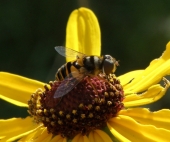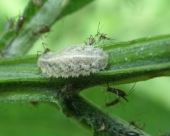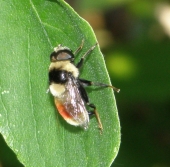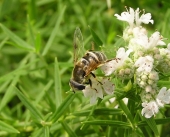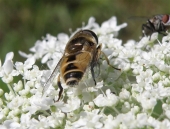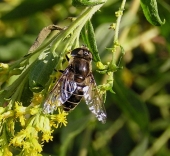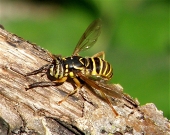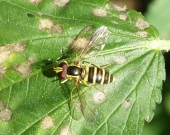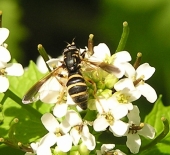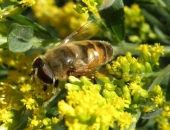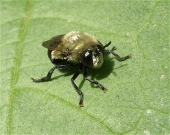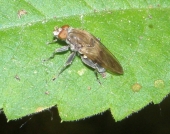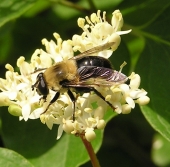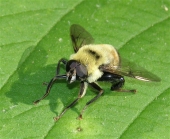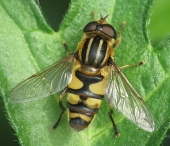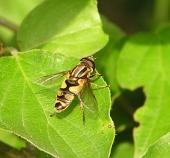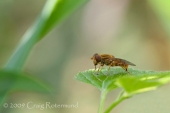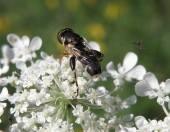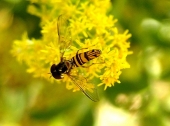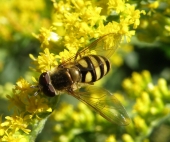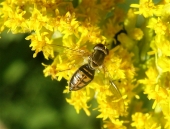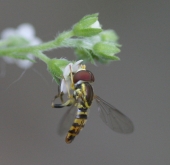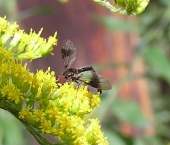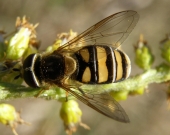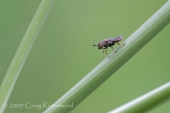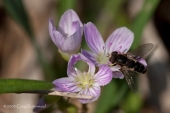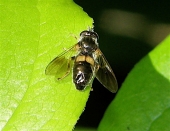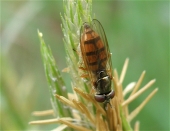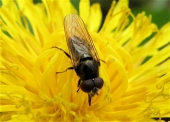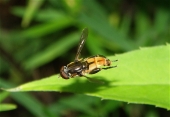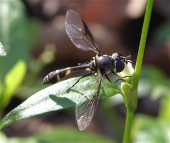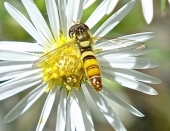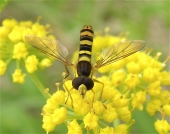
|
Don't miss these
FLOWER FLIES Flower Flies (family Syrphidae) are mimics of other insects and are also called hover flies or drone flies. The coloring and movements of most species mimic wasps, yellowjackets or bees. Despite their appearance they are harmless and they are valuable pollinators of flowers. There are more than 870 species in North America. They are either stout-bodied and covered with hair, resembling a bumble bee, or boldly patterned with yellow, orange and black, resembling wasps or honey bees. Some species wave their front legs in front of their face to mimic the jointed antennae of the potter wasps. They have large compound eyes that nearly cover the head. The eyes of males meet at the top of the head, while females have a space in between.
Adult flower flies can generally be found hovering in midair or feeding at flower blossoms. They eat only nectar and pollen. However, their larvae can be rapacious predators of aphids, thrips, and mites, or parasitic in the nests of ants or solitary bees. Some larvae are aquatic, while others scavenge in soil or decaying plant material or eat living plants. Disclaimer: The content of NatureSearch is provided by dedicated volunteer Naturalists of Fontenelle Nature Association who strive to provide the most accurate information available. Contributors of the images retain their copyrights. The point of contact for this page is: Loren Padelford. |
|
|
